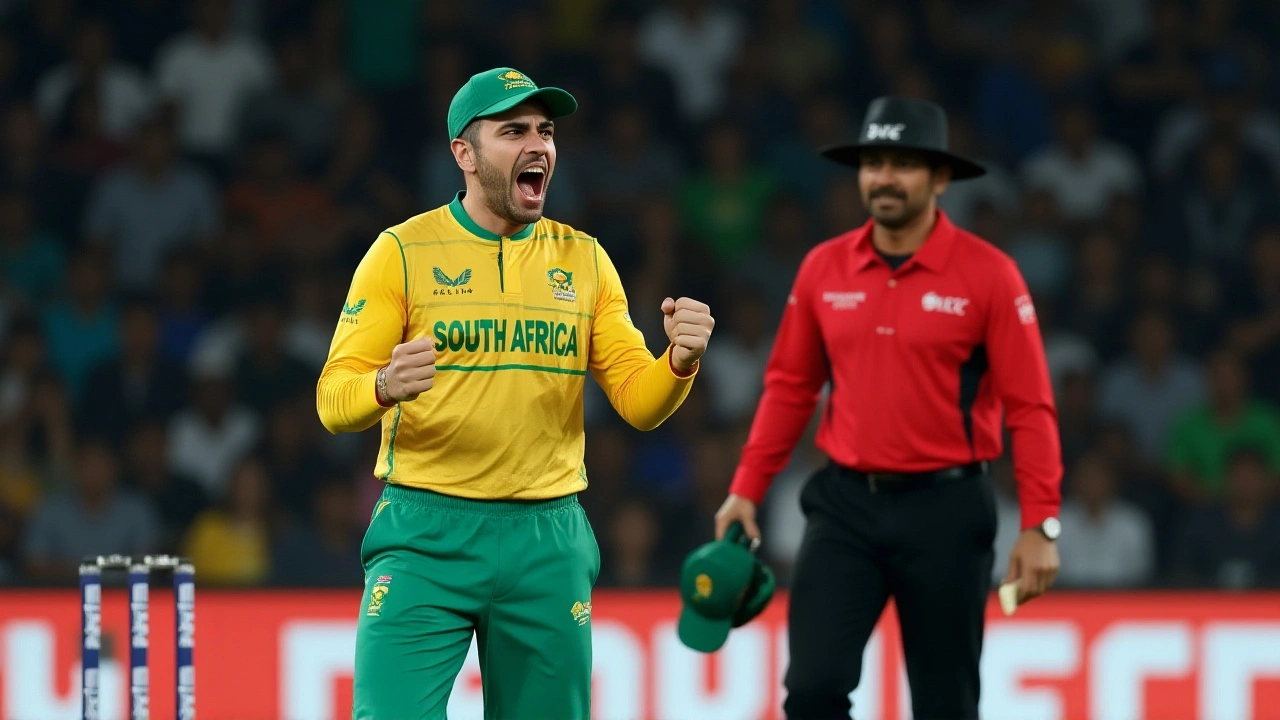When Keshav Maharaj, the South African left‑arm spinner born on 7 February 1990, ripped through the Australian batting line‑up for 5 wickets for 33 runs, the ICC’s official rankings shifted in his favour.
The breakthrough came at Cazalys Stadium in Cairns, Queensland, on 19 August 2025. In that first ODI of a three‑match series, the Proteas posted a 98‑run victory, and Maharaj vaulted to the top of the International Cricket Council (ICC) Men’s ODI Bowling Rankings with 680 rating points.
Background: Maharaj’s climb to the summit
Before this match, Maharaj hovered just outside the top‑five, a respectable spot for a spinner in an era dominated by pace. His career‑best figures of 5/33 weren’t just a personal milestone; they were a statement that South African spin could compete with the world’s elite. The last time he wore the No. 1 badge was November 2023, when a series of tight spells against England nudged him ahead of the then‑leader, India’s Kuldeep Yadav.
What makes his recent surge remarkable is the timing. The rankings update on 21 August 2025 showed him leap two places, displacing Sri Lanka’s Maheesh Theekshana, who had sat on 659 points after a strong sub‑continent tour.
The Cairns showdown: How a five‑wick haul changed the rankings
Australia’s top order looked solid on paper, but Maharaj’s looping deliveries turned the pitch into a sticky wicket. He dismissed Aaron Finch, Mitchell Marsh, and David Warner in quick succession, each caught behind. “I just kept the line tight and trusted the turn,” Maharaj said in a post‑match interview. “When you see the ball bite, you can feel the momentum shift.”
His spell also earned him a coveted Rating Point Boost from the ICC’s algorithm, which weights recent performances heavily. The system, which looks back over roughly three years, awarded Maharaj a 21‑point surge – enough to push him past Theekshana and ahead of Kuldeep Yadav, who sits at 650 points.
Ripple effects: Other players on the move
The same ranking release moved a handful of South African batsmen up the ladder. Aiden Markram jumped four spots to No. 21 after a gritty 68‑run knock, while Temba Bavuma climbed five places to No. 23, both benefiting from half‑centuries in the Cairns fixture.
Over in the West Indies camp, captain Shai Hope surged to No. 9 among ODI batters, having piled up 207 runs in a three‑match series against Pakistan. His teammate, fast bowler Jayden Seales, vaulted 15 places to 18th in the bowling list after a ten‑wicket haul across the series.
From the Australian side, newcomer Nathan Ellis cracked the top ten, landing at No. 9 after a 3‑for‑31 spell in the third T20I that preceded the ODIs. Fellow paceman Josh Hazlewood rose two spots to 18th, reflecting his steady contributions.

What the rankings mean for South Africa and the global game
South Africa’s cricket board has long struggled to produce a world‑class spinner. Maharaj’s ascent shatters that narrative and gives the Proteas a tactical edge. “Having a bowler who can consistently break partnerships in the middle overs is priceless,” noted former South African captain AB de Villiers in a commentary piece.
Globally, the shift underscores a broader trend: spin is reclaiming relevance in the 50‑over format, a space once dominated by sheer pace. The ICC’s own analysis points out that spin‑led dismissals have risen from 18 % in 2018 to 27 % in 2025, a clear sign that pitches and strategies are evolving.
Looking ahead: The rest of the series and beyond
The Proteas now sit up 1‑0 with a chance to clinch the series at home. The second ODI, slated for 22 August, will see Australia field a slightly reshuffled attack, hoping to neutralise Maharaj’s turn. If he repeats even a fraction of his Cairns performance, he could cement his ranking for months.
Beyond the immediate series, the next major test will be the ICC World Cup Qualifiers in November. A top‑ranked bowler brings both confidence and a psychological edge, especially when facing teams that traditionally struggle against quality spin.
- 5/33 figures at Cazalys Stadium – career best for Maharaj.
- ICC ODI Bowling Rating: 680 points (up from 659).
- South Africa leads series 1‑0; next match 22 Aug.
- Other ranking moves: Markram (+4), Bavuma (+5), Hope to No. 9 batting.
- Spin dismissals now 27 % of all ODI wickets (ICC 2025 data).
Frequently Asked Questions
How does Maharaj’s new ranking affect South Africa’s ODI strategy?
With Maharaj at the helm, South Africa can rely on spin to break crucial partnerships in the middle overs, allowing their pace bowlers to focus on early wickets. The team is likely to deploy him more frequently on slower surfaces, a tactic that could prove decisive in the remaining Cairns matches and upcoming World Cup qualifiers.
What caused the shift in the ICC ODI bowling rankings?
The ICC’s points system heavily weights recent performances. Maharaj’s 5‑wicket haul earned him a 21‑point boost, while Sri Lanka’s Maheesh Theekshana missed a similar opportunity in the same period, letting the South African overtake him.
Who are the other spinners close to the top of the ranking?
India’s Kuldeep Yadav sits third with 650 points, while Afghanistan’s Rashid Khan, a dominant force in T20s, holds the No. 2 spot in ODIs with 710 points, according to the October 2025 ICC table.
Will Australia adjust their batting order to counter Maharaj?
Analysts predict a more aggressive opening partnership and a deeper reliance on left‑handed batsmen who traditionally handle spin better. Coach Darren Lehmann hinted at a tactical reshuffle for the second ODI.
What does this ranking milestone mean for spin bowling worldwide?
Maharaj’s rise signals a revival for spin in one‑day internationals. It encourages teams to develop quality spinners and invest in pitches that offer turn, potentially reshaping future ODI tactics across all cricketing nations.
